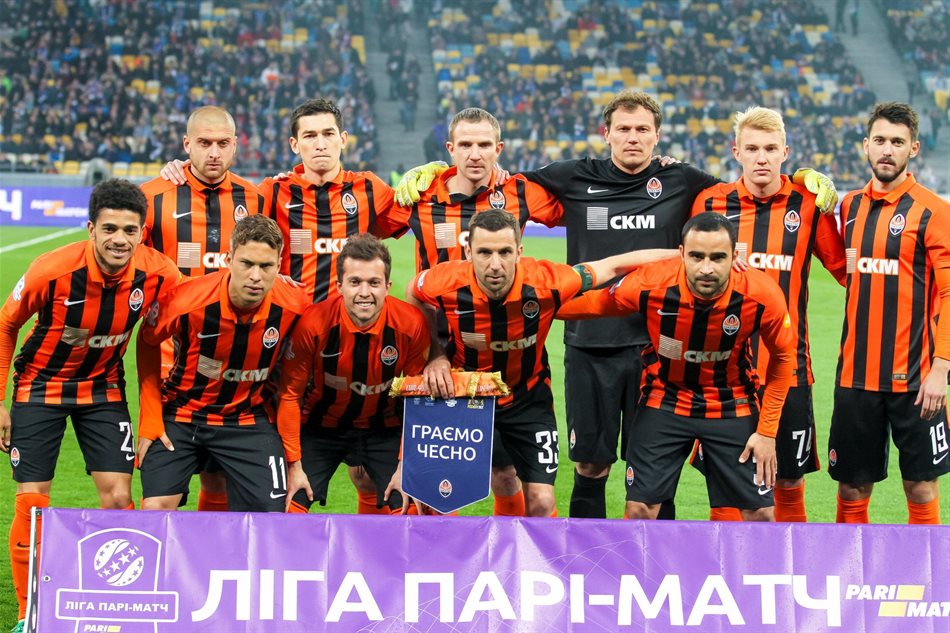The story of how a man from Merthyr Tydfil influenced Shaktar Donetsk

Unless you’ve been living under a rock the past few months, you may have heard about Gareth Bale’s much publicised falling out with Real Madrid manager Zinedine Zidane, and his subsequent departure back to former club Tottenham Hotspur.
With the Champions League kicking off once again this week, many Welsh football fans would be forgiven for thinking it’s a match to avoid – however, there will still be a strong Welsh influence on the pitch on Wednesday, mainly because of the influence one Welshman had on the Galacticos first opponents: Shakhtar Donetsk.
To explore this Welsh influence, we need to take you way back to 1869, when the Russian Empire discovered iron ore in the region, and subsequently made an offer for overseas help – promising free coal, a cheap labour force and a substantial return on investment for any experienced miners willing to travel over to help exploit the iron reserves. Welshman John James Hughes, an experienced coal miner from Merthyr Tydfil, was operating as Director of the Millwall Iron Works Company, when he decided to take the gamble. He duly accepted the offer from the Russian Empire, and subsequently left his normal life behind. Arriving in Russia, or what is now modern-day Ukraine, he and 100 of his loyal workers began to set up the ‘New Russia Company Ltd’, purchasing a piece of land close to the river Kalmius.
Within two years, the site was flourishing, with multiple furnaces up and running, quickly being followed by mines, brickworks and rail lines, before they were subsequently followed up by churches, hospitals, schools and fire brigades. By the time of Hughes’ death while on a trip to St Petersburg in 1889, he had set up an entire expatriate community, thriving in what was now referred to as Hughesovka.
It wasn’t until 1913 however, that Hughesovka became involved in football, with a side which included eight Britons winning the Donbass Cup, which was one of a host of regional football tournaments that had begun to pop up. Unfortunately, World War I put paid to any hope of continuous success for the side, as three of their players were killed during the war. Following the end of World War I, the state assumed control of Hughesovka, and most of their expatriate community fled, with Hughesovka being renamed Stalino in 1924, which is the Russian word for steel.
However, the Donbass miners who remained enjoyed playing football in their spare time, and ended up setting up Shakhtar in 1936 to compete in the inaugural Soviet Championship later that year, playing under the name of Ugolshchiki Stalino. The name was changed almost immediately to Stakhanovets Stalino, in honour of a local miner who became a propaganda symbol. That name lasted until 1946, when the Club was renamed Shakhtyor (or Shakhtar), and the thriving community became Donetsk in 1961, when new Soviet leader Nikola Krushchev sought to remove anything considered too influenced by former leader Stalin, which included Stalino.
The football club remained Shakhtyor until 1992, when they evolved into FC Shakhtar Donetsk, and the Club are still operating in this current guise even today, having enjoyed significant success, winning their first Ukrainian title in the 2000/2001 season, and becoming the dominant force in Ukrainian football since. The Club’s nickname still references the hardworking heritage passed down by Hughes and the community of Hughesovka in the early 20th century, with the side commonly known as Hirnyky (the Miners). The Ukrainian side’s badge still features a pair of miners hammers, with the orange segments at the top of the badge meant to reference the sun which greet miners as they exit the mines. The Club, while always looking forward, undoubtedly still respects and pays tribute to the history on which the City of Donetsk now stands.
So, despite Gareth Bale’s departure from Real Madrid, there will definitely be some Welsh influence on display at the Estadio Santiago Bernabéu when the sides meet on Wednesday, 21st October.







